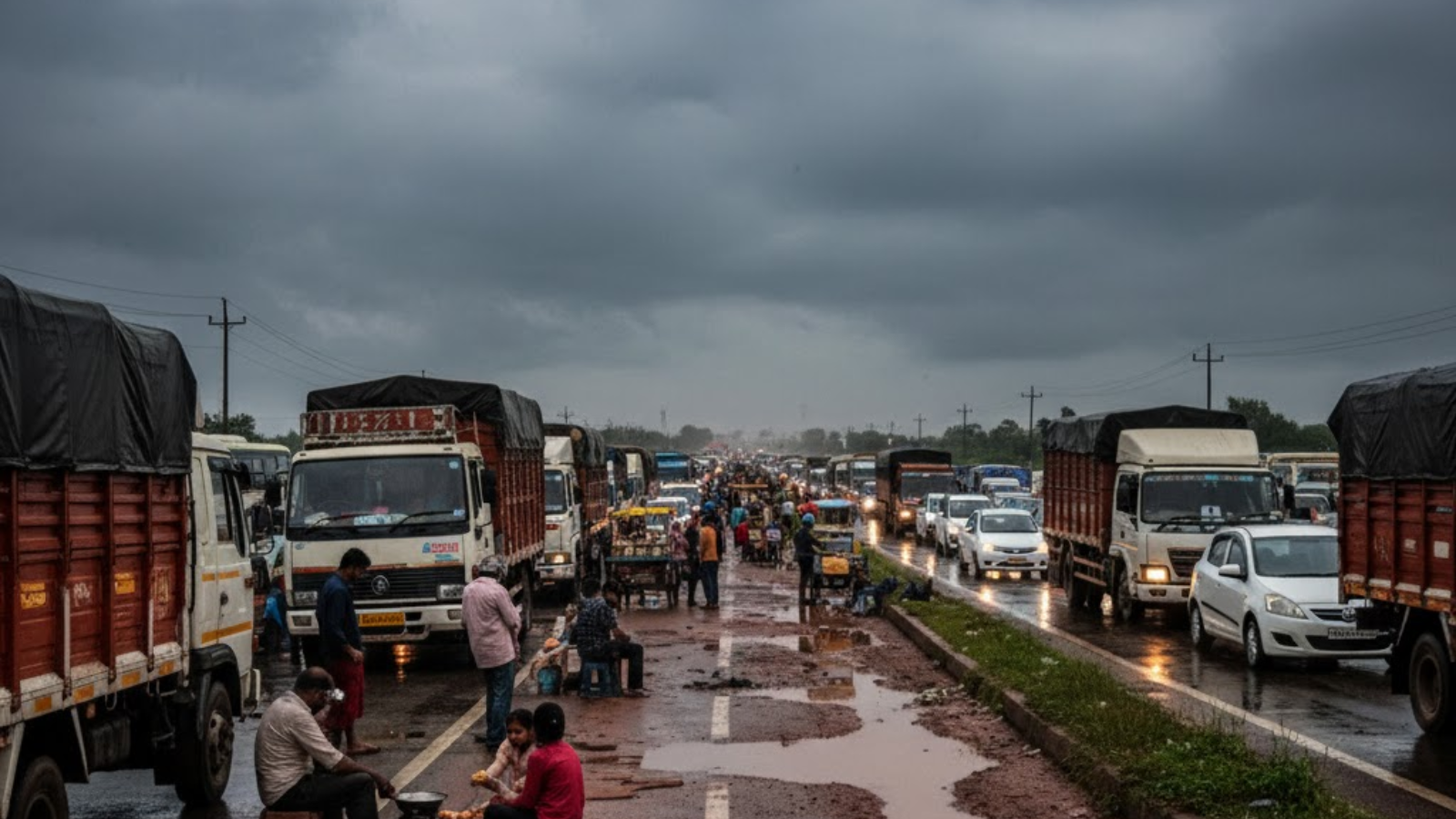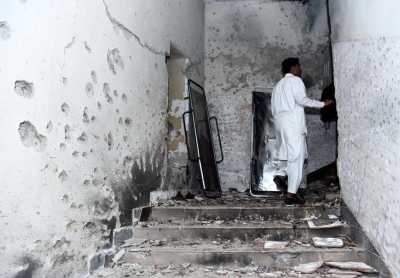20-km Traffic Jam on Delhi-Kolkata Highway; Vehicles Stranded for 3 Days
A 15–20 kilometre section of National Highway 19 connecting Delhi and Kolkata has turned into a nightmare for motorists, as vehicles remain stuck for up to three days near Sasaram in Bihar’s Rohtas district. he congestion reportedly began after heavy rainfall inundated parts of the highway where expansion and repair work is underway, especially in the Shivsagar stretch, forcing traffic into narrow diversions that cannot handle the volume.
Drivers describe a surreal ordeal. One trucker, Duban Kumar, "The jam has been there since yesterday morning, around 8 am. I've barely moved 5 kilometres. I've been stuck here in Sasaram itself since then. There is no food, we are surviving on little snacks available on the roadside,"
Another truck driver, Sanjay Das, who was travelling from Kolkata, claimed he managed only 20 km in 24 hours with no visible relief efforts, stranded commuters and freight vehicles have faced mounting distress.
The cause of the gridlock is twofold. First, ongoing widening work road by NHAI have narrowed usable lanes, compelling traffic into limited diversions. Second, torrential rains flooded those very diversions and service lanes, rendering them partially impassable As a result, potholes, slushy stretches, and waterlogging have slowed movement to a crawl.
In some segments, vehicles have reportedly advanced only five kilometers in a full 24-hour period. In other words, what should be a few hours’ drive has stretched into a multi-day ordeal. Observers say the jam now extends nearly 65 km up to Aurangabad from the trouble zone in Rohtas.
The economic and human cost is mounting. Transporters carrying perishable goods fear heavy losses. Ambulances, emergency services, and passengers on tight schedules face severe delays or outright inability to traverse. One frustrated driver asked: despite paying tolls and taxes, why is there no visible response from NHAI or local authorities?
Attempts to get statements from NHAI have been met with silence. An NHAI Project Director reportedly declined comment on camera when questioned. Meanwhile, the delay in clearing the stretch continues unabated.
Given the highway’s strategic importance - part of the historic Grand Trunk Road and a key trade artery for goods and passengers linking eastern and northern India - such a breakdown in highway mobility is disruptive at scale. The congestion also underscores vulnerabilities in managing infrastructure during monsoon or extreme weather, especially where ongoing upgrades intersect with heavy traffic flows.
Unless authorities act decisively to dewater, clear bottlenecks, and open alternate routes, stranded vehicles may face prolonged delays. For the thousands caught in the jam, relief is urgent but remains elusive.

Drivers describe a surreal ordeal. One trucker, Duban Kumar, "The jam has been there since yesterday morning, around 8 am. I've barely moved 5 kilometres. I've been stuck here in Sasaram itself since then. There is no food, we are surviving on little snacks available on the roadside,"
Another truck driver, Sanjay Das, who was travelling from Kolkata, claimed he managed only 20 km in 24 hours with no visible relief efforts, stranded commuters and freight vehicles have faced mounting distress.
You may also like
 Pakistan witnesses alarming spike in violence in 2025: Report
Pakistan witnesses alarming spike in violence in 2025: Report- Vande Bharat Express to be launched between Ernakulam and Bengaluru by mid-November: Ashwini Vaishnaw
- 19 US lawmakers urge Trump to 'reset and repair' ties with India (IANS Exclusive)
 Navi Mumbai Municipal Transport Joins 'Mumbai One App' For Seamless Integrated Public Transport
Navi Mumbai Municipal Transport Joins 'Mumbai One App' For Seamless Integrated Public Transport- Georgia Harrison makes history as first Love Island star awarded MBE
The cause of the gridlock is twofold. First, ongoing widening work road by NHAI have narrowed usable lanes, compelling traffic into limited diversions. Second, torrential rains flooded those very diversions and service lanes, rendering them partially impassable As a result, potholes, slushy stretches, and waterlogging have slowed movement to a crawl.
In some segments, vehicles have reportedly advanced only five kilometers in a full 24-hour period. In other words, what should be a few hours’ drive has stretched into a multi-day ordeal. Observers say the jam now extends nearly 65 km up to Aurangabad from the trouble zone in Rohtas.
The economic and human cost is mounting. Transporters carrying perishable goods fear heavy losses. Ambulances, emergency services, and passengers on tight schedules face severe delays or outright inability to traverse. One frustrated driver asked: despite paying tolls and taxes, why is there no visible response from NHAI or local authorities?
Attempts to get statements from NHAI have been met with silence. An NHAI Project Director reportedly declined comment on camera when questioned. Meanwhile, the delay in clearing the stretch continues unabated.
Given the highway’s strategic importance - part of the historic Grand Trunk Road and a key trade artery for goods and passengers linking eastern and northern India - such a breakdown in highway mobility is disruptive at scale. The congestion also underscores vulnerabilities in managing infrastructure during monsoon or extreme weather, especially where ongoing upgrades intersect with heavy traffic flows.
Unless authorities act decisively to dewater, clear bottlenecks, and open alternate routes, stranded vehicles may face prolonged delays. For the thousands caught in the jam, relief is urgent but remains elusive.









